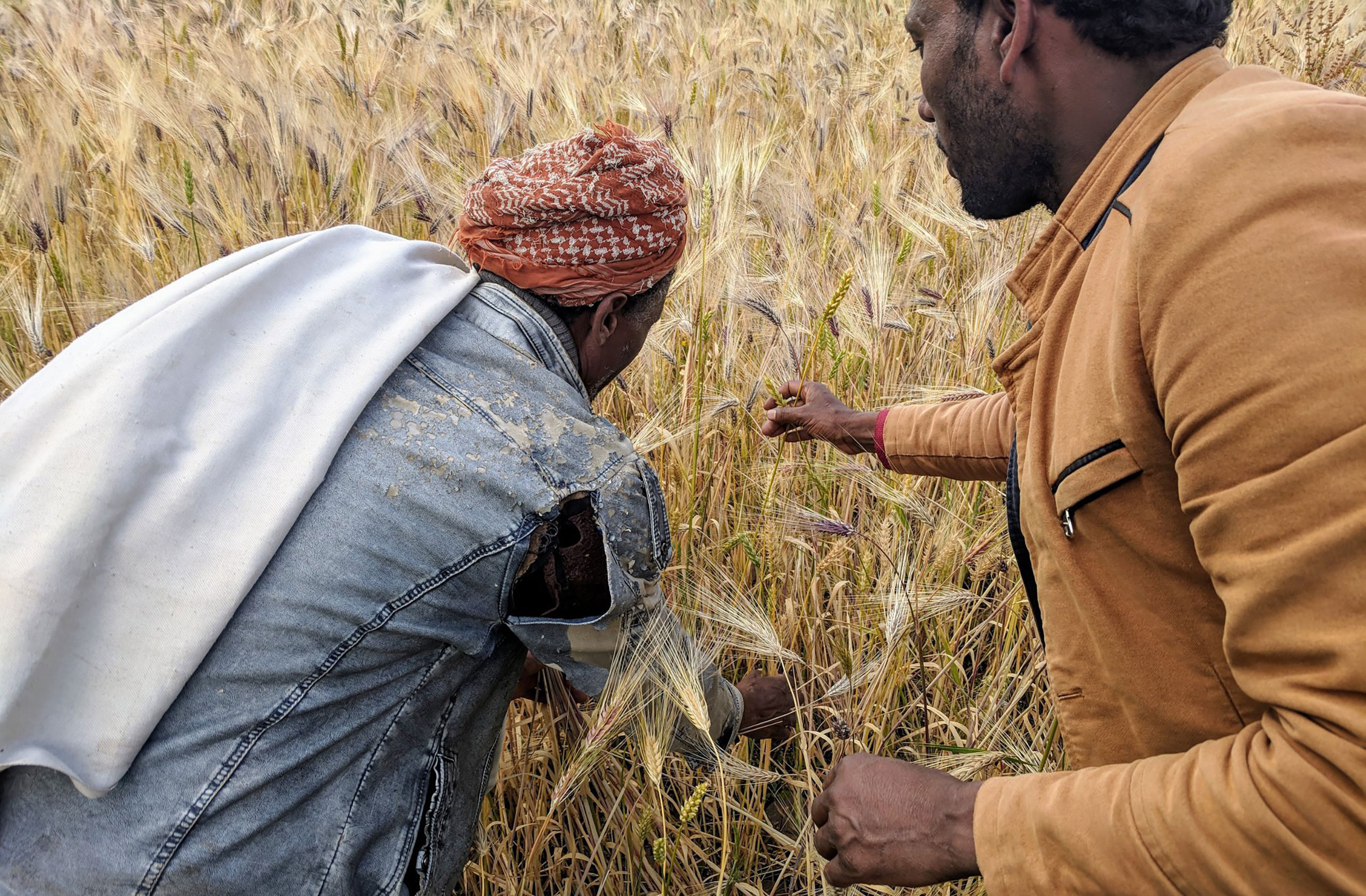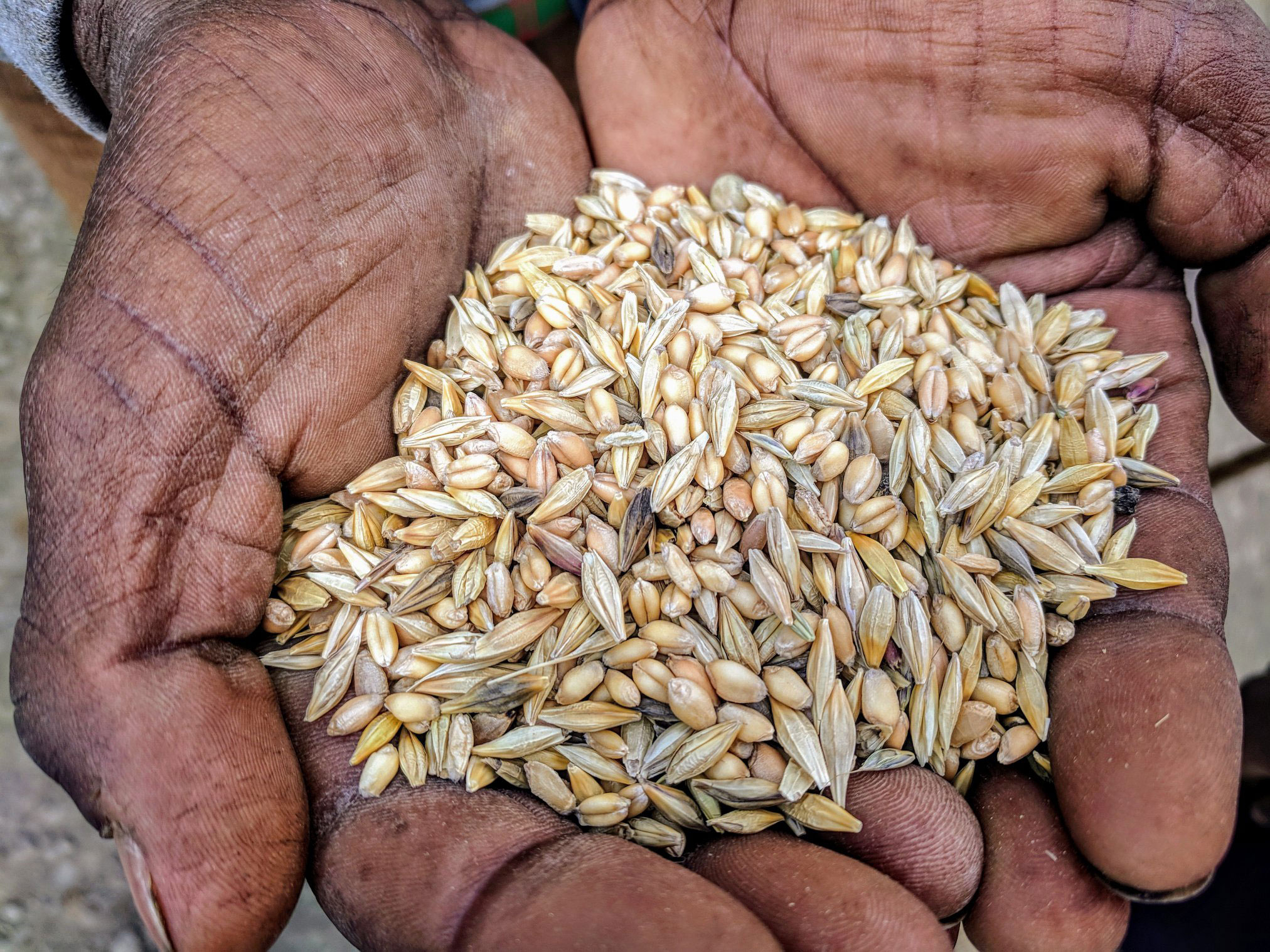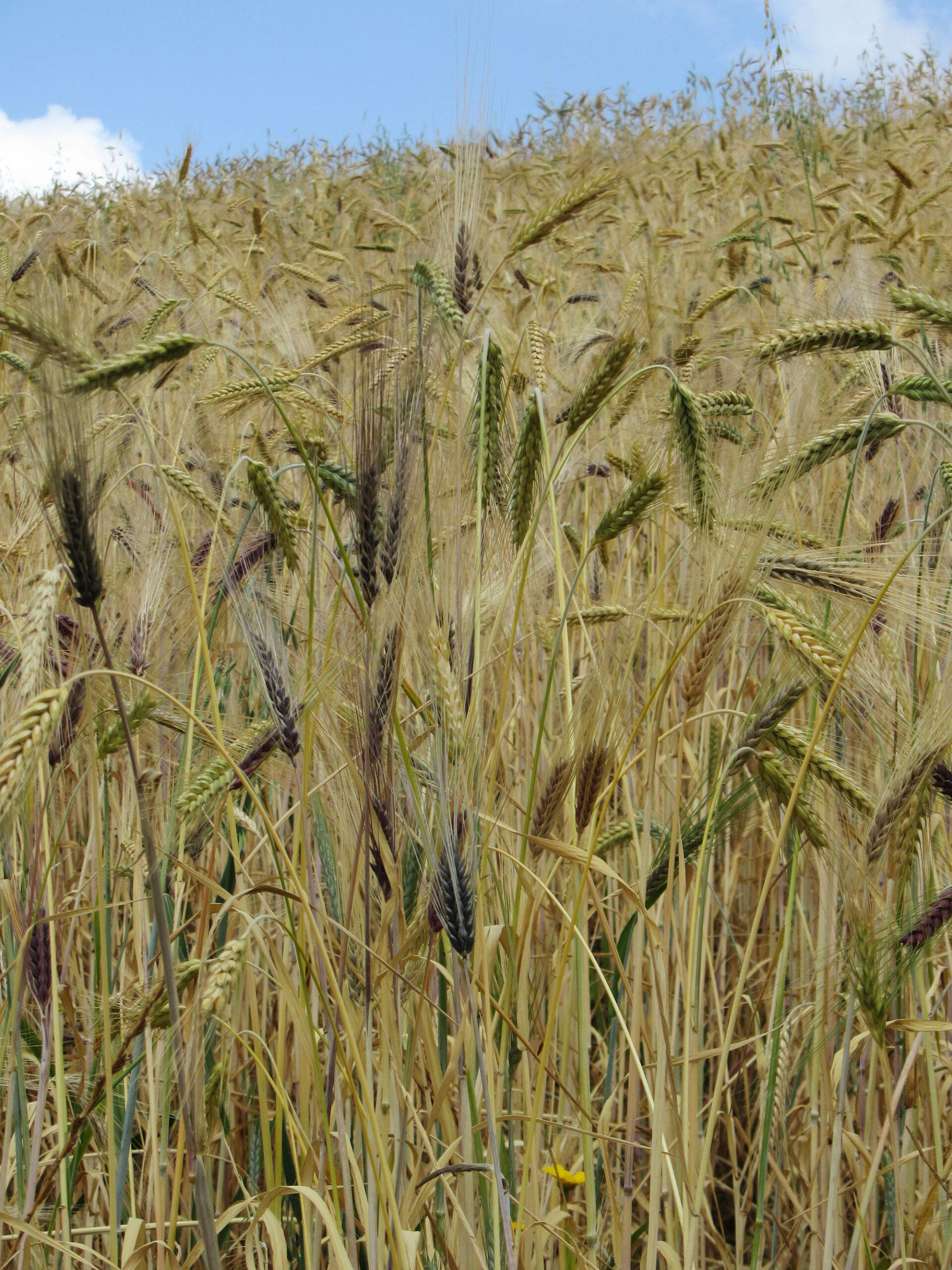Can we feed the world by going with the grains?

A Clark University professor is part of an international research project to determine whether Ethiopian farmers’ age-old practice of planting and harvesting traditional grain mixtures could offer a climate-resilient solution to global food insecurity.
Morgan Ruelle, a professor of environmental science and policy in Clark’s Department of Sustainability and Social Justice, is collaborating with researchers from Cornell University, City University of New York, the New York Botanical Garden, Ethiopia’s Addis Ababa University and Wollo University, and the Ethiopia Public Health Institute. The project is funded by the Rockefeller Foundation’s Periodic Table of Food Initiative.
“We’re interested in how the diversity of the grains relates to climate adaptation. In some cases, the farmers are planting five to seven different varieties of two different species in a single field,” Ruelle says. “They’re planted together, harvested together, used together, saved together, and then planted again the next year.”
From his office at Clark, Ruelle — who speaks Amharic, the national language of Ethiopia — is co-designing ethnobotanical and agroecological research with faculty and Ph.D. students in ethnobotany at Addis Ababa University. The students are interviewing hundreds of farmers, district administrators, and extension agents about their traditional practices.
Armed with smartphones and notebooks, the students ask the farmers about their knowledge and use of four grain mixtures: wheat and barley; faba (fava) beans and field peas; sorghum; and teff, which is used to make injera, the pancake-like flatbread and a mainstay of Ethiopian meals. The students then upload that data to a server for analysis, with support from research partners in the United States and Ethiopia.

Meanwhile, master’s students in agronomy and agricultural science from Wollo University are conducting agricultural trials with 10 farmers, who are experimenting with different ratios of grain mixtures to see how they affect crop yields and nutritional values.
This fall, two master’s students from Clark’s Department of Sustainability and Social Justice will join the project, traveling to Ethiopia in summer 2025 to work with Addis Ababa students and faculty, including Professor Zemede Asfaw, whom Ruelle calls “the father of ethnobotany in Ethiopia.” Ruelle first met Zemede in 2010 when, as a Ph.D. student at Cornell, he was conducting research on plant diversity in Ethiopia. Zemede later served on Ruelle’s dissertation committee.
“He’s a very talented researcher,” Ruelle says. “He taught me how to interview farmers. So much of that involved his humility, patience, and kindness.”
‘An example of really sophisticated indigenous knowledge’
Ruelle’s newly acquired interviewing skills came in handy when, in 2011, he first began hearing from farmers about duragna, a mixture of wheat, barley, and other cereals broadcast as a mixture in the same field — not side by side in alternating rows, a more common practice called intercropping.

Ruelle’s talks with farmers fueled more research with colleagues at Cornell; he joined them in publishing a 2022 article, “Cereal Species Mixtures: An Ancient Practice with Potential for Climate Resilience,” in Agronomy for Sustainable Development.
This work also laid the groundwork for the team’s current — and much larger — collaborative research project in Ethiopia.
The traditional grain mixtures — which are known as maslins in France, where they were first cultivated during Medieval times — are “self-evolutionary crops where the varieties compensate for each other depending on the climate and weather conditions in the particular year,” Ruelle explains.
“The proportions of each component in the mixture changes from year to year,” he says. “If it’s really dry one season, the varieties that do better under dry conditions take over, and if it’s really wet, others become dominant.”
Over time, the farmers have discovered, the mixtures produce more stable yields from year to year. Besides changes in precipitation patterns, the maslins also respond well to challenges like pests, diseases, and low soil quality.
“These grain mixtures are an example of really sophisticated indigenous knowledge about crops,” Ruelle points out, “and it’s not easy to create the mixtures. You have to find varieties that will come to maturity at the same time, you have to use them year after year, and you have to observe and experiment with them to get the system to work.”
A longstanding tradition under threat
Maslins have been cultivated throughout the world for thousands of years in foods and beverages like bread, beer, and liquor, as well as to feed livestock.
“The sowing of maslins, or cereal species mixtures, was formerly widespread in Eurasia and Northern Africa and continues to be employed by smallholder farmers in the Caucasus, Greek Islands, and the Horn of Africa, where they may represent a risk management strategy for climate variability,” Ruelle and his co-authors note in their article.
Because large-scale farming and monoculture crops have dominated agriculture throughout the world, the planting of maslins has become scarce, and they are little studied, according to Ruelle. He and his peers hope to bring light to these practices before they disappear altogether.
“If the practice disappears,” he warns, “it will take a lot of time to ever bring it back.”
Why maslins could ‘feed the world’
The research project is focused on Ethiopia’s Wollo region, where famine killed as many as 1 million people in the mid-1980s. That human tragedy is still part of the cultural memory of Ethiopians and the rest of the world. In the West, it inspired Irish singer Bob Geldolf to pull together British pop stars in 1984 to produce a chart-topping Christmas song with the unforgettable refrain, “Feed the World.” An American benefit song, “We are the World,” soon followed. Together, they raised tens of millions of dollars for famine relief.
Four decades later, however, 150 million people in Ethiopia and other African countries face another food crisis, this time brought on mostly by climate change, according to the British Red Cross. Food scarcity will get even worse in the future, says a landmark 2022 report from the International Panel on Climate Change, which notes that Africa remains the continent most vulnerable to drought-induced famine.

But Ruelle and his colleagues hope that their project could lead to positive impacts not only in Ethiopia but other regions across the world.
Through its global project, the Periodic Table of Food Initiative, the Rockefeller Foundation is interested in the nutritional benefits of Ethiopia’s traditional grain mixtures, which, until now, have been ignored.
“When you’re eating multiple varieties of wheat or barley, you’re getting all kinds of different nutrients in your grain,” Ruelle explains. “Grains are not similar in their nutrient content. Some are higher in iron, some are higher in calcium, and some are higher in folic acid.”
Ethiopians know this, he adds. “A farmer will say, ‘I give this special mixture to my wife after she gives birth.’ They may not be identifying the chemicals or the nutrients per se, but they’re using certain foods for certain times of life or for certain ailments.”
This indigenous knowledge could help others outside of Ethiopia, according to Ruelle.
“As climate change affects crops and food sources across the world, traditional grain mixtures like these could nourish entire populations, including ourselves,” he says. “I’ve spoken to U.S.-based farmers — especially livestock producers — who are really interested in mixtures as a way to have more reliable yields, but they don’t have the varieties or the systems that the Ethiopians have held onto. So, it’s a really important contribution.”
Europeans also are interested in bringing back traditional agricultural practices that long ago produced hearty breads and what some might call “the original craft beer.”
“When tradition and innovation for climate change meet, there is double value,” Ruelle says. “People feel attached to these grain mixtures because they are what their ancestors practiced, but they also are wise for the future.”


